ULTIMATE SWEETS Short history of cakes including 200 savory and mouthwatering sweets recipes By Anna Scott  Copyright 2015 by Anna Scott All rights reserved. No part of this book may be reproduced or transmitted in any form or by any means, electronic or mechanical, including photocopying, recording or by any information storage and retrieval system without written permission from the publisher, except for the inclusion of brief quotations in a review. Warning-Disclaimer The purpose of this book is to educate and entertain. The author or publisher does not guarantee that anyone following the techniques, suggestions, tip, ideas, or strategies will become successful. The author and publisher shall have neither liability or responsibility to anyone with respect to any loss or damage caused, or alleged to be caused, directly or indirectly by the information contained in this book. If you would like to use material from the book(other than just simply for reviewing the book), prior permission must be obtained by contacting the author at Special Bonus Get Free Paleo: A Simple Start To The 14-Day Paleo Diet Plan For Beginners 1.
Copyright 2015 by Anna Scott All rights reserved. No part of this book may be reproduced or transmitted in any form or by any means, electronic or mechanical, including photocopying, recording or by any information storage and retrieval system without written permission from the publisher, except for the inclusion of brief quotations in a review. Warning-Disclaimer The purpose of this book is to educate and entertain. The author or publisher does not guarantee that anyone following the techniques, suggestions, tip, ideas, or strategies will become successful. The author and publisher shall have neither liability or responsibility to anyone with respect to any loss or damage caused, or alleged to be caused, directly or indirectly by the information contained in this book. If you would like to use material from the book(other than just simply for reviewing the book), prior permission must be obtained by contacting the author at Special Bonus Get Free Paleo: A Simple Start To The 14-Day Paleo Diet Plan For Beginners 1.
A Simple way Start To The 14-Day Paleo Diet, 2. giving you your dream physique., 3.easy to do, fun and effective.
4. a guideline of how to start your journey to a healthier, happier, fitter and more successful life  Click hear to download Download a FREE Photos PDF file of all recipes. Link located at the end of the book. Sorry about this inconvenience and not including the photo of the recipes here, but there is a reason behind this. I wanted to provide you with this awesome collection of recipes for the best possible promo price of just o.99$ and due to KDP pricing requirements if the book file is larger than 3 MB I can't do that, that's why there are no photos in the book, but you can download absolutely for FREE the PDF that has all the photos.
Click hear to download Download a FREE Photos PDF file of all recipes. Link located at the end of the book. Sorry about this inconvenience and not including the photo of the recipes here, but there is a reason behind this. I wanted to provide you with this awesome collection of recipes for the best possible promo price of just o.99$ and due to KDP pricing requirements if the book file is larger than 3 MB I can't do that, that's why there are no photos in the book, but you can download absolutely for FREE the PDF that has all the photos.
Table of Contents CAKES COOKIES CUPCAKES MUFFINS BROWNIES PALEO SWEETS PANCAKES WAFFLES CLASSIC CAKES CHOCOLATE CAKES CHEESE CAKES JELLY CAKES DONUTS ICE CREAMS ANGEL FOOD CAKE RED VELVET CAKE BUNDT CAKE POUND CAKE BIRTHDAY CAKES/BABY SHOWER CAKES DUMP CAKES
History of cakes
Let them eat donuts. No, that doesnt sound right. Let them eat muffins. Thats not it either. Let them eat cake. Now thats a great idea! The exact definition of cake changed throughout centuries, but the primary ingredients remained largely the same flour, milk, eggs, shortening, leavening agent and flavors.
Some cakes were more like enriched breads and pastries, while others were intricate confectionary experiments. There are countless cake recipes that are centuries old and are being perfected to this day.  Of course, making a cake would be impossible without having a proper set of baking tools and utensils. Today, these utensils are of immense help when creating a cake and can help anyone produce amazingly succulent cakes, which fall into several categories depending on the main ingredients used. Pound cake (or sponge cake) is a traditional and heavy British cake that uses a pound of each of its main ingredients: sugar, flour, butter and eggs. This is a massive cake thats meant to be eaten as a standalone meal rather than a dessert.
Of course, making a cake would be impossible without having a proper set of baking tools and utensils. Today, these utensils are of immense help when creating a cake and can help anyone produce amazingly succulent cakes, which fall into several categories depending on the main ingredients used. Pound cake (or sponge cake) is a traditional and heavy British cake that uses a pound of each of its main ingredients: sugar, flour, butter and eggs. This is a massive cake thats meant to be eaten as a standalone meal rather than a dessert.
Butter cakes were created when the industrial leavening agents (baking powder and soda) were introduced into the market. This cakes main ingredient is exactly what it says on the tin (butter) and it is considered a lighter and fluffier version of the English pound cake. Cheesecakes can be eaten raw or baked and consist of a base layer of pound cake or biscuits, on top of which is a thick body of rich, creamy cheese. Naturally, the English have claimed the cheesecake to be their invention, though there are mentions of it dating back to the era of ancient Greece and Rome. Fruit cake is the most common type of cake, since it is generally used to celebrate weddings, birthdays and other joyful events. It contains dried or fresh fruit.
Spice cakes focus on ginger, nutmeg, cinnamon and other spices to really spice up things. The maple cake is an American version of the spice cake. In any case, it didnt take after the invention of flour for the people to start making cakes. However, those cakes were not what we would call a cake today. They were made by adding some sort of sweetening to the bread recipe and preparing the resulting dough normally.  In this way, these ancient cakes rather resemble what we would now call a cookie or a biscuit, since they tended to be small in size.
In this way, these ancient cakes rather resemble what we would now call a cookie or a biscuit, since they tended to be small in size.
There are many examples of such fairly simple cakes that were found in the archeological digs dating back to the Neolithic. The presumed method of cooking is a large flat stone heated over a fire. The dough was made by grinding the grains and adding water. Then, the dough was squeezed and cooked. Ancient Greeks called the cakes plakous, which meant flat. Usual sweeteners were nuts and honey, since there was no way to produce refined sugar at that time.
Another form of Greek cake was sakura. Today, these names mean something else entirely and may not resemble the original shape or ingredients in any way. Not to be outdone, Romans had their own version of cake that they proudly stole from other nations of their time. These were called libum and placenta and were used for religious purposes only, to be offered to deities. Both of these resembled a cheesecake, with a rigid base supporting the light body of the cake.  In any case, as the methods to produce fine flour became more and more advanced, cakes began to distinguish them from being just a smaller cousin of breads.
In any case, as the methods to produce fine flour became more and more advanced, cakes began to distinguish them from being just a smaller cousin of breads.
Cake and bread no longer meant the same thing and only the rich strata of society could afford to eat a cake, let alone on a daily basis. Cakes eventually became the playground for the wealthy to show off. The most expensive cake ever was created in 2013 in Liverpool and was worth over $52 million. Other ways of improving cakes soon followed with the advancement of the industrial age. In 18 th century, eggs were widely used as a rising agent and created fluffy, airs and supremely light cakes that melted on the tongue and were gentle to the palate. The most used method for creating such a cake were molds, but one could also use anything that was handy.
Eventually, cake pans will replace such contrivances altogether, at least when it comes to a common household.  Cakes were seen as a way of life, a basic human right that everyone can savor, and this held especially true in America. In fact, each country and each region within a country had its own variety on the basic cake recipe. In the 19 th century, the cakes again came to the forefront of the food pyramid with the introduction of baking powder and baking soda. They will enable aspiring chefs to create truly amazing feats of cake. Though delicious, these cakes were nothing like the original cakes from the Roman era, being much richer in calories and taste.
Cakes were seen as a way of life, a basic human right that everyone can savor, and this held especially true in America. In fact, each country and each region within a country had its own variety on the basic cake recipe. In the 19 th century, the cakes again came to the forefront of the food pyramid with the introduction of baking powder and baking soda. They will enable aspiring chefs to create truly amazing feats of cake. Though delicious, these cakes were nothing like the original cakes from the Roman era, being much richer in calories and taste.


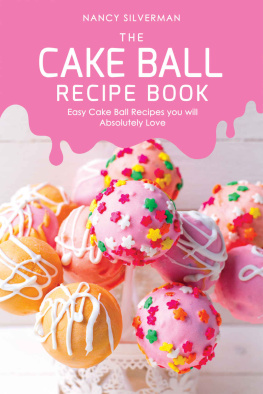

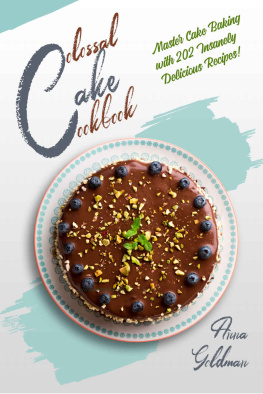
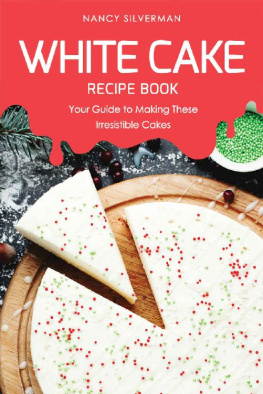

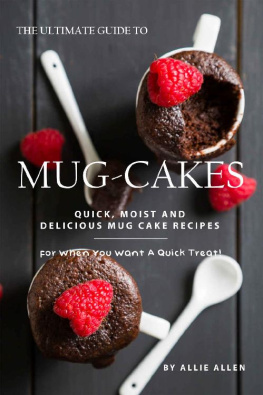

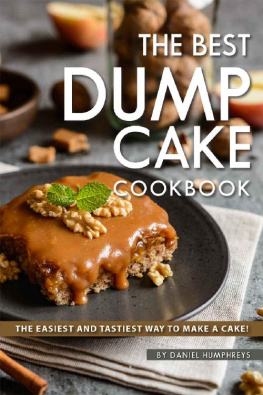
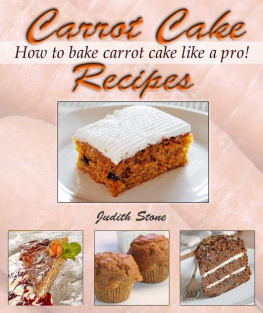
 Copyright 2015 by Anna Scott All rights reserved. No part of this book may be reproduced or transmitted in any form or by any means, electronic or mechanical, including photocopying, recording or by any information storage and retrieval system without written permission from the publisher, except for the inclusion of brief quotations in a review. Warning-Disclaimer The purpose of this book is to educate and entertain. The author or publisher does not guarantee that anyone following the techniques, suggestions, tip, ideas, or strategies will become successful. The author and publisher shall have neither liability or responsibility to anyone with respect to any loss or damage caused, or alleged to be caused, directly or indirectly by the information contained in this book. If you would like to use material from the book(other than just simply for reviewing the book), prior permission must be obtained by contacting the author at Special Bonus Get Free Paleo: A Simple Start To The 14-Day Paleo Diet Plan For Beginners 1.
Copyright 2015 by Anna Scott All rights reserved. No part of this book may be reproduced or transmitted in any form or by any means, electronic or mechanical, including photocopying, recording or by any information storage and retrieval system without written permission from the publisher, except for the inclusion of brief quotations in a review. Warning-Disclaimer The purpose of this book is to educate and entertain. The author or publisher does not guarantee that anyone following the techniques, suggestions, tip, ideas, or strategies will become successful. The author and publisher shall have neither liability or responsibility to anyone with respect to any loss or damage caused, or alleged to be caused, directly or indirectly by the information contained in this book. If you would like to use material from the book(other than just simply for reviewing the book), prior permission must be obtained by contacting the author at Special Bonus Get Free Paleo: A Simple Start To The 14-Day Paleo Diet Plan For Beginners 1. Click hear to download Download a FREE Photos PDF file of all recipes. Link located at the end of the book. Sorry about this inconvenience and not including the photo of the recipes here, but there is a reason behind this. I wanted to provide you with this awesome collection of recipes for the best possible promo price of just o.99$ and due to KDP pricing requirements if the book file is larger than 3 MB I can't do that, that's why there are no photos in the book, but you can download absolutely for FREE the PDF that has all the photos.
Click hear to download Download a FREE Photos PDF file of all recipes. Link located at the end of the book. Sorry about this inconvenience and not including the photo of the recipes here, but there is a reason behind this. I wanted to provide you with this awesome collection of recipes for the best possible promo price of just o.99$ and due to KDP pricing requirements if the book file is larger than 3 MB I can't do that, that's why there are no photos in the book, but you can download absolutely for FREE the PDF that has all the photos. Of course, making a cake would be impossible without having a proper set of baking tools and utensils. Today, these utensils are of immense help when creating a cake and can help anyone produce amazingly succulent cakes, which fall into several categories depending on the main ingredients used. Pound cake (or sponge cake) is a traditional and heavy British cake that uses a pound of each of its main ingredients: sugar, flour, butter and eggs. This is a massive cake thats meant to be eaten as a standalone meal rather than a dessert.
Of course, making a cake would be impossible without having a proper set of baking tools and utensils. Today, these utensils are of immense help when creating a cake and can help anyone produce amazingly succulent cakes, which fall into several categories depending on the main ingredients used. Pound cake (or sponge cake) is a traditional and heavy British cake that uses a pound of each of its main ingredients: sugar, flour, butter and eggs. This is a massive cake thats meant to be eaten as a standalone meal rather than a dessert. In this way, these ancient cakes rather resemble what we would now call a cookie or a biscuit, since they tended to be small in size.
In this way, these ancient cakes rather resemble what we would now call a cookie or a biscuit, since they tended to be small in size. In any case, as the methods to produce fine flour became more and more advanced, cakes began to distinguish them from being just a smaller cousin of breads.
In any case, as the methods to produce fine flour became more and more advanced, cakes began to distinguish them from being just a smaller cousin of breads. Cakes were seen as a way of life, a basic human right that everyone can savor, and this held especially true in America. In fact, each country and each region within a country had its own variety on the basic cake recipe. In the 19 th century, the cakes again came to the forefront of the food pyramid with the introduction of baking powder and baking soda. They will enable aspiring chefs to create truly amazing feats of cake. Though delicious, these cakes were nothing like the original cakes from the Roman era, being much richer in calories and taste.
Cakes were seen as a way of life, a basic human right that everyone can savor, and this held especially true in America. In fact, each country and each region within a country had its own variety on the basic cake recipe. In the 19 th century, the cakes again came to the forefront of the food pyramid with the introduction of baking powder and baking soda. They will enable aspiring chefs to create truly amazing feats of cake. Though delicious, these cakes were nothing like the original cakes from the Roman era, being much richer in calories and taste.